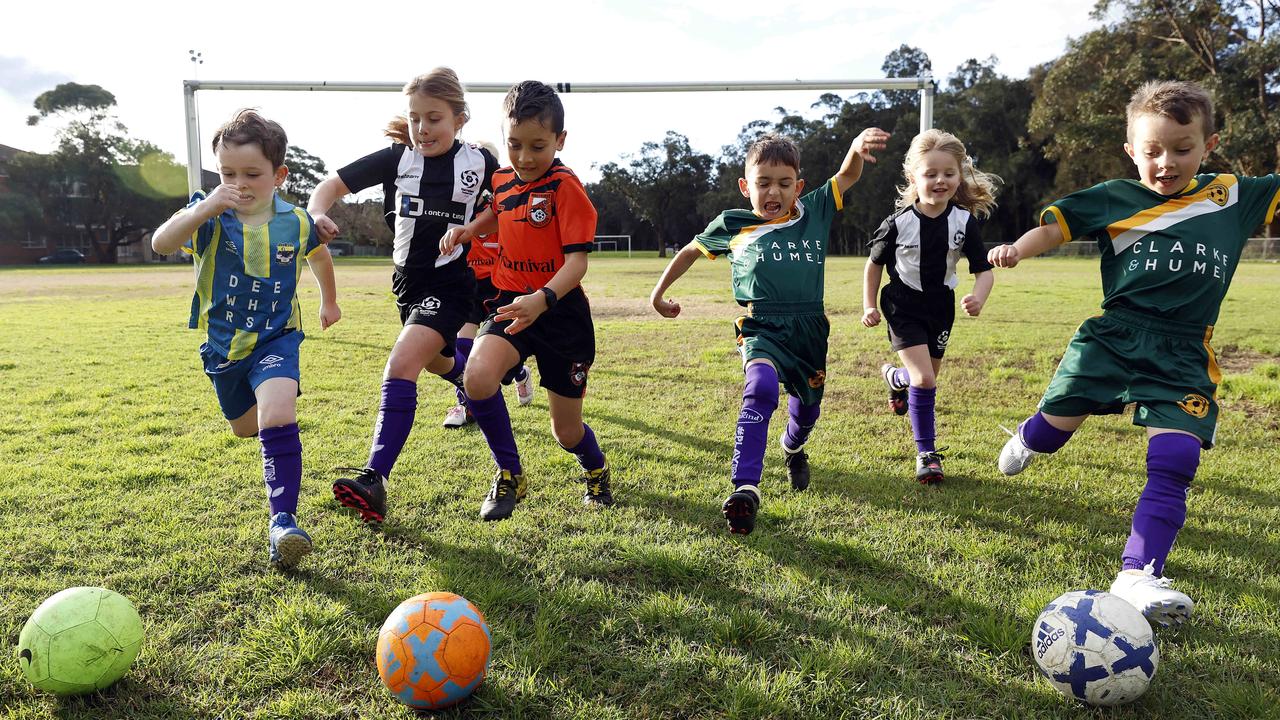Seismic head hit changes coming to junior, community sport
Australian sport is set to undergo a huge concussion protocol overhaul, in the biggest national changes ever seen in recreational sport

READING LEVEL: ORANGE
The Australian Institute of Sport* is proposing a major change in Australian recreational sports* to better protect kids and grassroots players* from brain damage*.
The idea is to implement new rules, like a minimum 21-day rest after a concussion* and having dedicated concussion officers on the sidelines.
If accepted, this shift in focus from winning at all costs to prioritising* participants’ health will mark a significant change in community sports* in Australia.
Several major sports have already made changes to protect players from head injuries, but health experts believe more needs to be done, especially for children, who often experience undiagnosed* or unreported head injuries due to a lack of proper medical attention*.

AIS chief medical officer Dr David Hughes said: “Whether you’re the coach of an Under 8s netball team in Mt Isa, or the coach of a professional football team in one of the capital cities, everyone should have access to the same information.”
“The visibility of concussion for the general public often comes through what they see in elite* football codes because it’s on the television” Dr Hughes said.
“That means every weekend they see concussion, sometimes from 10 different angles, which can be pretty confronting, but those concussions make up a very small portion of the total occurring each week in Australia.”
In a world-first, the AIS has partnered with British and New Zealand sporting authorities to advocate for universal guidelines to safeguard junior and community sport participants from long-term trauma*.
The key recommendations for returning to grassroots sport after a concussion include:
– At least 14 days symptom-free before returning to contact/collision training*
– A minimum 21-day rest before resuming competitive contact/collision sports
– Extended rest periods for those with multiple concussions
– Appointment of a concussion officer for community and school sports, similar to a fire warden*
These recommendations are based on global science indicating links between repeated head injuries and neurodegenerative diseases*.

The AIS is particularly concerned about the risks for children, whose developing brains make them more vulnerable* to concussions.
While the AIS can’t force sporting bodies to adopt these recommendations, dozens of federations* have already endorsed* the 62-page Concussion and Brain Health Position Statement.
But other major sporting bodies, including members of the Coalition* of Major Professional and Participation Sports, are still reviewing the proposals.
It is a particularly complex and sensitive issue* for many sports, particularly some of the footy codes already facing class actions* from former players.
Some argue that their current protocols*, including on-field rule changes and head injury assessments, are sufficient, but many in the medical profession believe more needs to be done.
The AIS said there was no deadline* for when sports need to sign up to the recommendations and officials remained optimistic all sports would eventually agree to adopt the changes.
“It’s going to be an ongoing process and will take a while,” Dr Hughes said.
“Obviously, it’s a big change for them and might not be exactly what they are out to do, but they’re all aware of it and it’s with them at the moment so we’ll just have to see what happens.”

The push for a national, independent approach* to treating head injuries gained momentum* after a senate inquiry* last year revealed the impact of concussions and repeated head trauma on players in contact sports.
The committee, chaired by Greens senator Janet Rice, made 13 major recommendations, including the creation of a National Sports Injury Database.
These include simplifying the messages for kids, parents, school teachers and coaches by promoting new, easy to understand slogans* about how everyone should approach head injuries.
“It’s important to manage all instances of concussion with an abundance of caution* and make it clear that a conservative management* approach is needed,” Dr Hughes said.
“The AIS wants everyone involved in sport to remember, when considering an athlete with possible concussion, ‘if in doubt, sit them out’.”
GLOSSARY
- Australian Institute of Sport: an organisation in Australia focusing on sports development, research, and athlete support
- recreational sports: fun and enjoyable activities for leisure and relaxation
- grassroots players: individuals playing sports at the local or community level
- brain damage: harm or injury to the brain
- concussion: an injury to the head affecting the brain
- prioritising: making something more important or giving it higher importance
- community sports: sports activities involving local people and neighbourhoods
- undiagnosed: not officially identified or recognised, especially in terms of medical conditions
- medical attention: care or treatment from a doctor or other healthcare professional
- elite: top or highest level
- trauma: emotional or physical damage caused by a severe event
- contact/collision training: practice involving physical interaction or impact with others
- fire warden: a person responsible for fire safety
- neurodegenerative diseases: conditions affecting the nerves leading to a decline in function over time
- vulnerable: easily harmed or injured
- federations: groups or organisations of sports
- endorsed: officially approved or supported
- coalition: a group of organisations working together
- sensitive issue: a topic requiring careful handling due to its emotional or controversial nature
- class actions: legal actions taken by a group of people with similar complaints
- protocols: established procedures or rules
- deadline: a time limit by which something must be completed
- national, independent approach: a way of dealing with something countrywide and not influenced by others
- momentum: the strength or force gained by something moving forward
- senate inquiry: a formal investigation conducted by a legislative body
- slogans: catchy phrases or sayings used for promotion
- abundance of caution: being very careful and taking extra measures
- conservative management approach: being cautious and careful in how something is handled
EXTRA READING
Red card chaos at football match
‘How I skateboard without my legs’
Five new sports named for 2028 Olympics
QUICK QUIZ
- What is the AIS’s concern about the risks for children in sports?
- What does the AIS want everyone involved in sports to remember about athletes with possible concussions?
- Who has partnered with the AIS to advocate for universal guidelines for sports safety?
- Why are some sports facing class actions from former players?
- What did the senate inquiry recommend, including the creation of what?
LISTEN TO THIS STORY
CLASSROOM ACTIVITIES
1. Write a slogan
“If in doubt, sit them out” is one slogan that’s being used to help people understand what to do when someone has a possible concussion. Can you think of some and write other catchy slogans that could be used for this or to help everyone understand how dangerous concussion can be?
Time: allow at least 15 minutes to complete this activity
Curriculum Links: English, Science, Health and Physical Education
2. Extension
Do you play or watch a team sport? Choose a sport that you know and write some rule changes or other changes that could lessen the risk of head and other injuries for people playing that sport.
Time: allow at least 15 minutes to complete this activity
Curriculum Links: English, Science, Health and Physical Education
VCOP ACTIVITY
Summarise The Article
A summary can be a really good way to grab the main idea plus some key points in the article as a highlight. Think of the summary like a little advertisement or extract you could use to encourage people to read the article in detail. You want to give them an overview of the article that includes the main idea (being able to tell the audience what the article is about in one sentence), plus a few of the key points of the information.
Remember to re-read your summary to check that it is clear, concise and makes sense to the audience who haven’t read the article yet. You need to make language choices that allow you to explain the information in only a few sentences.


